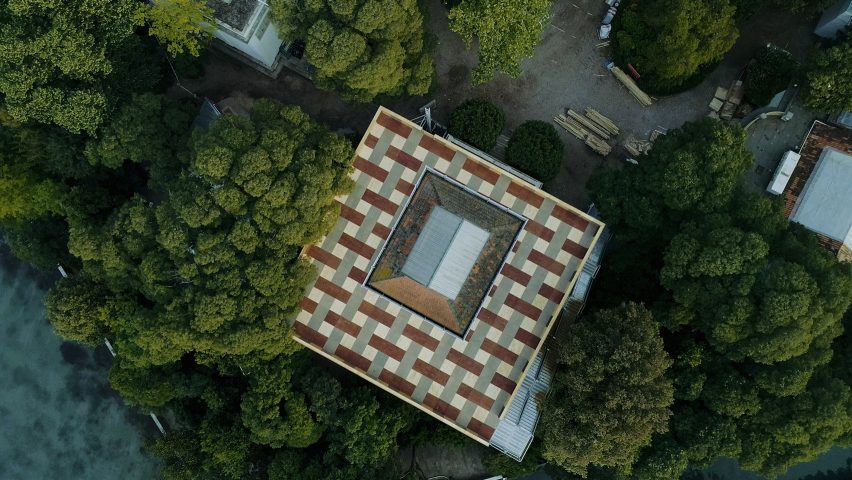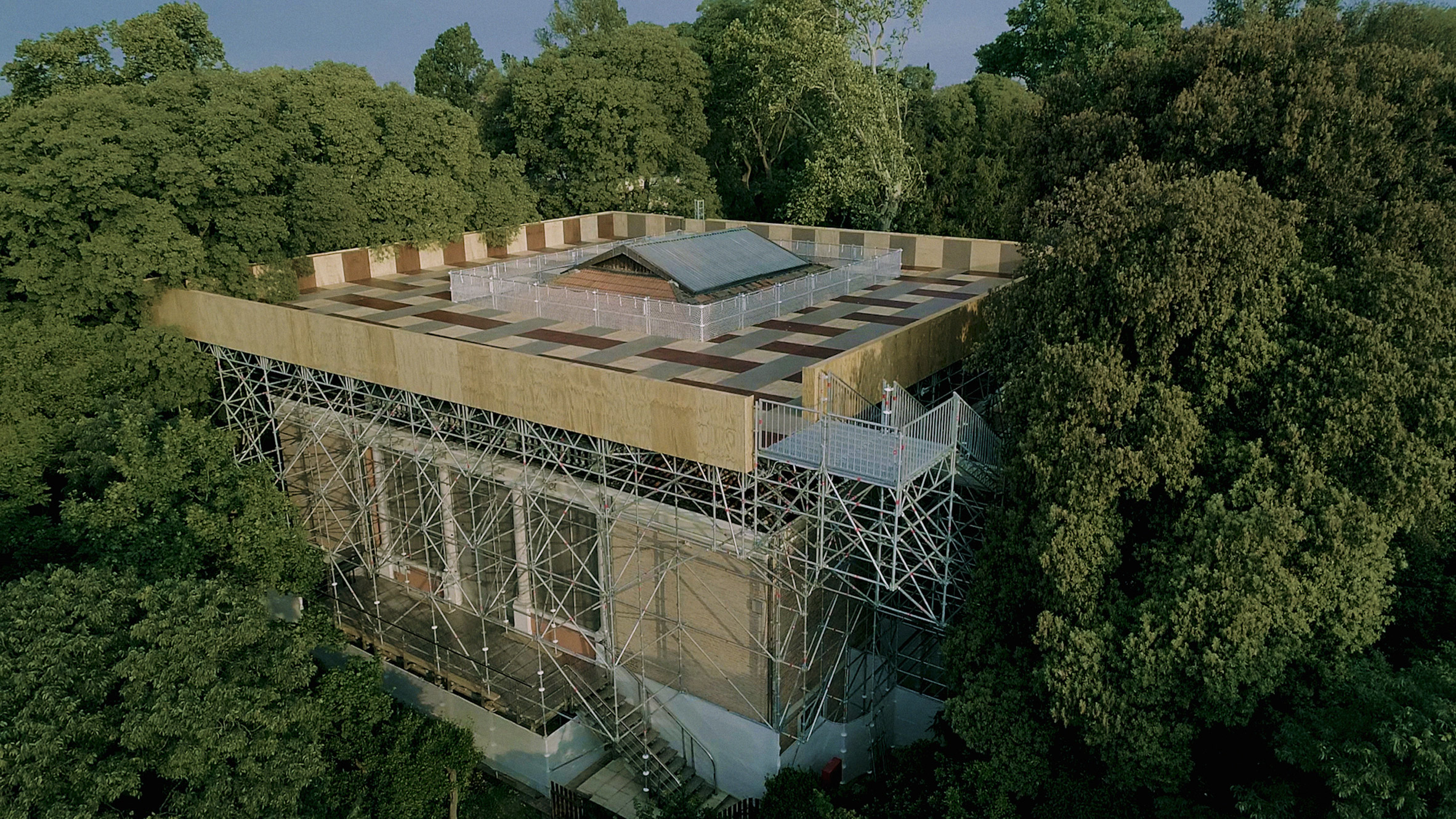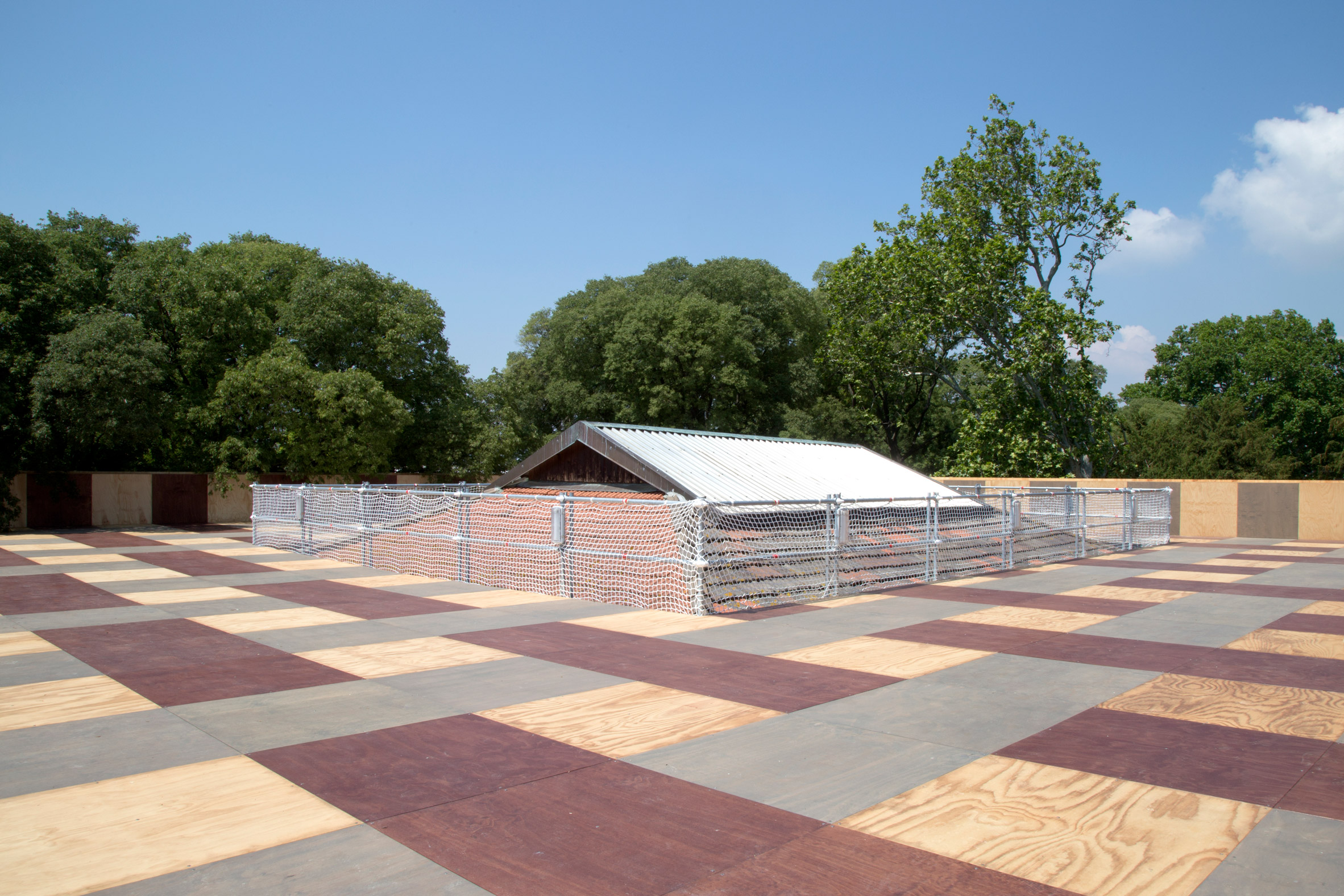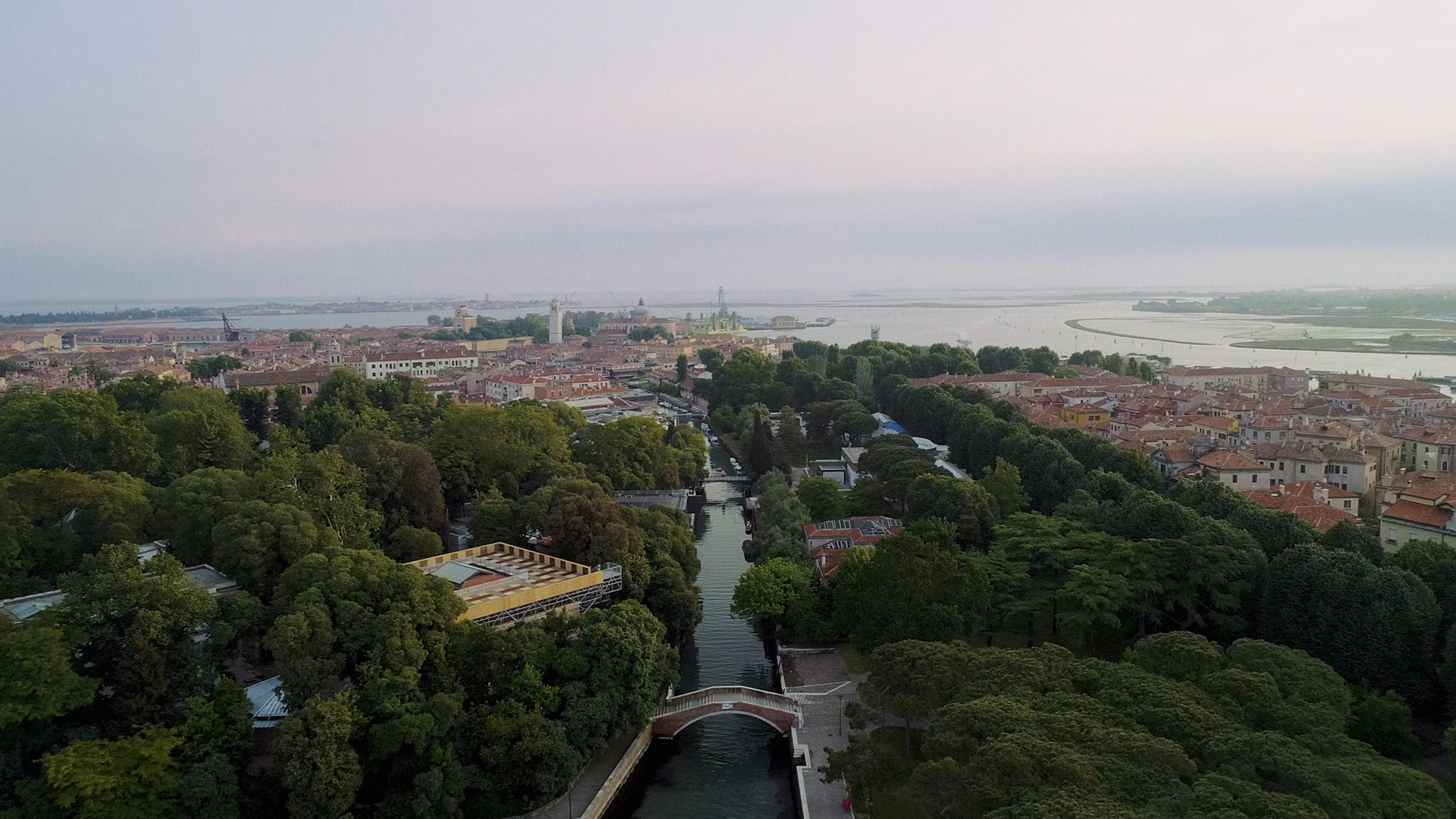Architecture firm Caruso St John and artist Marcus Taylor have installed a huge platform in the pavilion of the Venice Architecture Biennale in the United Kingdom, to create a "place of refuge and exile".
The curators chose to build scaffolding around an empty British pavilion, to support the wooden "island" placed at the top.
The claim of the project, called Isla, is intended to address many issues, including colonialism and climate change. But, according to Caruso St. John's co-founder, Peter St. John, Brexit was one of the drivers of the concept.
Scaffolding envelops the British pavilion, hiding the building. Drone photography by Cultureshock Media.
"It does not feel like something you could do at another time other than the year before we leave the European Union," he told Dezeen.
The platform is deliberately simple in design. Square on the floor, it has a stamped surface that recalls the impressive tile floors of the Italian palaces.
The tip of the roof of the pavilion protrudes from the center, as if the mast of a drowned ship could extend over the surface of the water.
An "island" of wood stands on the building. The photograph is by Hélène Binet.
The space will host a series of events, debates, installations and performances in the coming months, which will address a wide range of topics. San Juan said he hopes that a place is created for people to reflect on the current situation, but also to think optimistically about the future.
"There is the idea that covering the building of this empire-style building on scaffolding suggests a period of pause, a period of self-criticism and re-evaluation," he said.
"It's supposed to be about a lot of issues, and these will be discussed at conferences and events that will take place on the platform and in the pavilion."
The platform has a stamped surface that recalls the impressive tile floors of Italian palazzos. The photograph is by Hélène Binet.
Visitors arrive on the platform by ascending metal steps that extend along the pavilion. But you can also climb the old stone steps and enter the pavilion.
This interior space has been left completely empty. All that remains are the traces of exhibitions exhibited in the pavilion in previous years.
Visitors arrive on the platform by ascending metal steps that extend along the pavilion. The photograph is by Hélène Binet.
The pavilion officially opened today with the performance of the English poet, music and writer Kate Tempest, whose recent album Let Them Eat Chaos follows the lives of the residents of a single street during a storm, in the context of a global crisis.
"There were certain subjects that I had been really thinking about and his voice seemed to be a very good way to illustrate them," explained Marcus Taylor.
"There was a certain way he described the people who were negotiating the architecture of everyday life, getting together, the issues he talked about seemed to be very relevant to this situation."
The program also includes a performance of La Tempesta by the Italian theater company Teatro en Bottega, which generally performs plays in stores, prisons and public spaces.
Other countries participating in the Venice Architecture Pavilion have also been invited to organize an event at the venue.
The interior space of the pavilion has been left completely empty. The photograph is by Hélène Binet.
"What I like about our project is that it's conceptual, it's an idea and it works at a very general level, and it's not something that feels too specific," St John added. "There will be things that will happen here that we have no control over and do not initiate, but we are not very interested in the rules."
The pavilion will host a series of events, debates, installations and performances during the coming months. Drone photography by Cultureshock Media.
After months of dialogue and entertainment, the platform will be removed and the scaffolding removed.
"We will see exactly what it was like before," said San Juan. "But the events will have changed, they will be there as a moment, an answer to a moment, I think.






